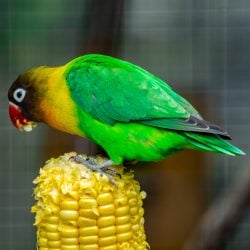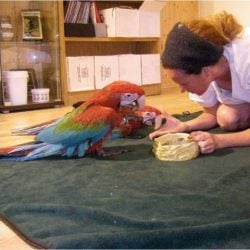Last Updated on by Mitch Rezman
Hello, I rec’d my order for the Trademark Home Collection Sunlamp.
It’s listed as a full spectrum light on your site, however, the box nor instructions say full spectrum.
I’ve looked online as well and can’t seem to find where it’s a full spectrum lamp. It says “sunlight simulator”.
My understanding is that there is a difference between “sunlight simulator” and “full-spectrum”.
Would you be able to confirm that this bulb is indeed full-spectrum? If its not, do you sell a replacement full-spectrum bulb that will fit this lamp fixture safely?
Thanks so much!
Dawn M
Hi Dawn
First of all it’s important to note there is no technical definition of “full-spectrum” lighting which makes it impossible to measure. If you need to compare “full-spectrum” sources you have to compare spectral distributions. This is because even “sunlight” itself changes throughout the day depending where you are on the planet, what the time is and weather conditions.
Color temperature and Color Rendering Index (CRI) are the standards for measuring light. “Full-spectrum” is actually a marketing term and lacks a scientific-technical definition and can not be measured. If you take a small block (think ice cube size) of carbon “C” it will radiate light of varying spectral power distribution (SPD) as it is heated. At 0 Kelvin the block of carbon “C” would appear pure black, but if you heat it up to somewhere between 5,000 Kelvin to 5,500 Kelvin, that cube of carbon “C” would glow as brightly as the Arizona sun at noon in August on a cloudless day,
The Kelvin temperature of the lamp (bulb) you purchased is 6500 Kelvin and gives off 1300 LUMENS It has a C.R.I.(Color Rendering Index) of 80-85, gives as much light as an
ordinary 150-watt bulb, but uses far less energy. The bulb can last up to 5000 hours, 5x longer than other bulbs- for years of normal use.
Much has been written on the effects of UVA and UVB rays emitted from certain “Full spectrum” bulbs. It’s said that these rays may help with a bird’s assimilation of vitamin D and perhaps other nutrients. What science we can find on the subject has not convinced us.
The metal coatings on the interior of “Full spectrum” bulbs is necessary to replicate the additional portions of the ultraviolet spectrum, double the cost of the bulb and yet if you evaluate a bird on a seed diet vs. a pellet diet vs. natural grain with fruit and vegetable diet tests would all yield different nutritional results.
At the end of the day we feel there are two goals of “Full Spectrum” lighting for caged birds. The first is to make the bird feel better about itself as most exotic birds are found naturally in equatorial regions of the earth, areas where light can usually be measured at 5,000 Kelvin or above throughout the day.
The second is to make those 10,000 feathers look great to you.
Let me know if I can help further
MitchR CMO
Author Profile
Latest entries
 PigeonsJune 20, 2025How Do Parrots Thrive in Cities Outside Their Native Habitats?
PigeonsJune 20, 2025How Do Parrots Thrive in Cities Outside Their Native Habitats? Feeding Exotic BirdsJune 20, 2025Is Corn On the Cob Safe for Pet Birds?
Feeding Exotic BirdsJune 20, 2025Is Corn On the Cob Safe for Pet Birds? Bird & Parrot AnatomyJune 19, 2025Would You Like a Comprehensive Guide for Training Your Bird?
Bird & Parrot AnatomyJune 19, 2025Would You Like a Comprehensive Guide for Training Your Bird? Feeding Exotic BirdsJune 19, 2025Here Are Three (Video) Strategies to Help Your Bird Forage
Feeding Exotic BirdsJune 19, 2025Here Are Three (Video) Strategies to Help Your Bird Forage




